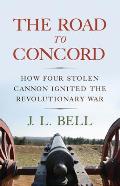Easy Cases Make Good Law?
The Washington Post and Forbes reported on how five US Supreme Court justices recused themselves on a copyright infringement case.
Four of those justices have book deals with Penguin Random House, a party in the case. There’s no obvious reason for the fifth justice’s decision, but people suspect some similar financial interest.
Some court observers saw these justices’ choice as an indication that they were paying more attention to ethical issues. Others saw danger in how many justices have income from book sales, potentially making it impossible for them to rule ethically about publishing law.
I have different thoughts. First, book income pales in comparison to the other outside income justices receive for appearing at exclusive legal conferences, especially compared to the work involved.
Furthermore, Justice Clarence Thomas has received millions of dollars in value through vacations, vehicles, and other presents for no work at all, and then repeatedly failed to disclose those gifts.
After the Thomas scandals broke, conservatives tried to build up Justice Sonia Sotomayor’s book deal into a comparable brouhaha. Justices had been publishing books for years before that (Thomas among them) without attracting so much criticism.
So while I do see the potential ethical problems when judges have financial interests aligned with large media companies, I don’t think that’s at the top of the list of what needs to be fixed at the Supreme Court.
Second, I looked at the case that the five justices recused from, Baker v. Coates et al., through this PDF. A man decided that Ta-Nehisi Coates had plagiarized his self-published book and sued not only Coates but lots of other people and corporations involved in other things Coates has written: The Atlantic Monthly, Disney (as owner of Marvel Comics), Oprah Winfrey and Apple (for broadcasting an interview), and so on.
The filing includes pages and pages of side-by-side comparisons between Coates’s writing and the plaintiff’s—which show very little similarity. Unlike some plagiarism claims that make the news with obvious parallels, such as Pete Hegseth’s senior thesis, this one reveals no smoking guns. It doesn’t even offer water pistols.
A lower court dismissed that claim with prejudice—i.e., totally swatted it away. An appeals court upheld that decision. The Supreme Court’s inaction cements that result, but I think it’s extremely unlikely the court would have accepted this case anyway. The justices probably wanted nothing to do with it.














